Best Venice restaurants: pushing the gondola out
Despite its tourist trappings, a mouth-watering culinary tour of the Floating City is possible without breaking the bank

Venice is a puzzle. In what is surely the most alluring destination in all of Italy if not Europe, it is one of the trickiest places to find somewhere decent, let alone exciting, to eat. It is nothing to do with the ingredients as the freshest fish is delivered daily and there are plenty of exquisite fresh herbs, artichokes and courgette flowers on display at the Rialto Market and elsewhere.
Perhaps restaurateurs have become blasé because of the constant turnover of new mouths to feed – upwards of 60,000 tourists arrive daily, which is more than the local population. There is also, perhaps, an attitude problem. One travel writer friend of mine rather rashly complained to the maître’d in a well-established place that the calves liver was in fact pig. Without saying a word, the entrance door was locked and the gentlemen drew out a knife to silently press his request for payment.
The best way to eat if you are devoting all of the day time hours to architecture and art, is to eat cicchetti, the bar food served in the local bacari. Cantina do Mori, which has existed since 1462, is tucked away down an alley behind the Rialto Bridge. The bar snacks are skewered with toothpicks placed in glass cases giving them the appearance of a miniature edible yacht marina.
Subscribe to The Week
Escape your echo chamber. Get the facts behind the news, plus analysis from multiple perspectives.

Sign up for The Week's Free Newsletters
From our morning news briefing to a weekly Good News Newsletter, get the best of The Week delivered directly to your inbox.
From our morning news briefing to a weekly Good News Newsletter, get the best of The Week delivered directly to your inbox.
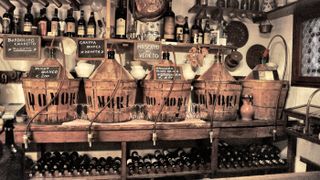
This is hardly haute cuisine – deep fried tuna balls, anchovies with peppers or boiled eggs and “francobollo”, small white bread sandwiches filled with sliced meats, roast vegetables or gorgonzola. Cheap as well as serious wines are available by the glass. There are any number of excellent alternative bacari, including the nearby La Cantina or Bancogiro, which is actually on the Grand Canal. Although not a bacari, CoVino in the Castello district, is a tiny set-lunch restaurant, which is almost impossible to get a reservation, but from what all of my friends told me, it is worth making the effort.
There are a handful of well-established places that can deliver excellent local cuisine such as Altanella (President Mitterrand’s local) on Guidecca or alla Madonna (Lord McAlpine’s favourite) or Antiche Carampane both near the Rialto, but the real problem is consistency, with even famous places falling short on occasions. Harry’s Bar is the most celebrated of all Venetian places, tucked away in an alley next to the San Marco ferry terminal. It is arguably the most famous bar in Europe, which invented both the Bellini (peach juice and Prosecco) and the Carpaccio (beef tartare with streaks of mayonnaise).

The website tactfully lists all of their dishes and drinks but so as not to frighten the horses, no indication of the prices, which is understandable given that a Bellini costs £20 and a large plate of Carpaccio three times that. This probably explains why in the Trip advisor ratings, more than twice as many respondents declare it “terrible” than “excellent”.
The only way to avoid such prices is to go with a local as if you can show proof of residency you only pay half. This is probably the best way to go unless you are either famous or with someone who is, as otherwise the magic of this seemingly non-descript place may well seem to be a chimera. But what about the other iconic places that attract quite a lot of attention?
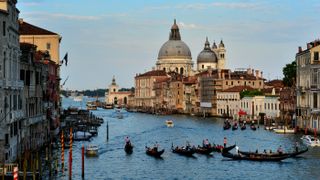
The first thing to sort out is the serious prices you have to pay in Venice for virtually any luxury product. The best way to understand this is to imagine what you would be expected to pay for food if you were staying on one of the most beautiful yachts in the world with everything having to be laboriously imported and carried on board.
Cip’s Club is an open sided pontoon moored right next to the Cipriani Hotel opposite Piazza San Marco. The food is decidedly casual and straightforward – carpaccio, mozzarella with salad and figs, whole grilled turbot. Prices are certainly not cheap – everything from starters, pasta and main courses seem to be around £40 each though the wine list offers relative bargains at the top end. Given that you have one of the most spectacular vistas in all of Venice, it would be churlish to quibble about these prices.
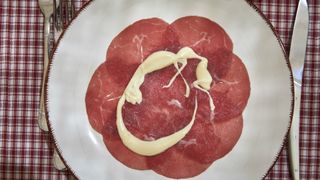
The most interesting new hotel restaurant has to be the Aman Canal Grande, which in reality is Palazzo Papadopoli on the Grand Canal. The owners still live in an apartment while the rest of the palace has been converted into a £1,000-a-night 24-room hideaway hotel. We ate outside next to the canal at the Arva (Harvest) restaurant. Executive Chef Dario Ossola spent five years working at Soho House in London as well as two years at Zafferano, a Michelin Italian restaurant in Knightsbridge.
This was casual but sophisticated cuisine with a number of dishes paying homage to the Venice Lagoon, such as polenta and baccalà, bigoli with chilli and clams plus eel with plums and courgette. However, Dario is keen to showcase whatever happens to be fresh or ripe on the day, so he also serves superb dishes of raw yellowtail with sesame or delicate Sicilian prawns with stracciatella and oregano. This was easily the best hotel food I have had in Venice in more than a quarter of century at prices which were marginally less than Cip’s Club.

For our final meal, I decided to try Quadri, the historic restaurant on the first floor of part of Piazza San Marco. It has recently had a facelift from designer Philippe Starck and some local artists. The kitchen is now under the control of Alajmo family, who own the three-star Michelin Le Calandre in nearby Padua.
The décor is certainly striking, with stuffed racoons, foxes and hares all with angels' wings strewn around the walls and oversized chandeliers hanging from a classical ribbed ceiling. Executive Chef Silvio Giavedoni has worked with the Alajmo family for several years and has already earned one Michelin star. And from this experience, I would expect him to soon be awarded a second one. The quality of presentation, assuredness of flavour combinations and subtlety of his dishes are equal to any fine dining restaurant in Italy.
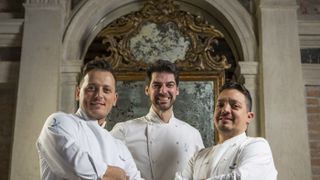
The first course – tonno di dentice – was carpaccio of dentex, which resembles an elongated snapper marinated in beetroot juice. This was presented on a nearly invisible glass plate along with tiny crackers and dollops of caviar. The next dish was equally stunning – breaded and fried squid with asparagus gelato and a raw oyster. The squid was encased in perfect tempura while the oyster and gelato ended with a sharp hit of iodine.
Chef Silvio kept up the standard for the rest of the meal with a simple penne with cuttlefish, ginger and spring pea ragu, a lobster claw with spicy olive oil potato puree and three rare slices of rib eye steak with balsamic vinegar and tarragon sorbet. This was easily the finest food I have ever eaten in Venice and puts paid to the notion that you have to compromise with standards because of the location.
It is possible to have two or three dishes for around £140 while the three set menus are around half as much. This may sound an outrageous amount to pay but it is worth remembering that the very best Parisian restaurants are nearly double this and certainly not twice as good.
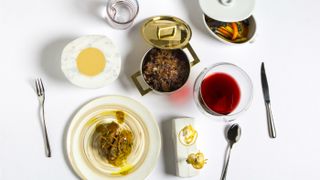
Altogether, this was a satisfying journey and convinced me that it is possible to eat well in Venice at all levels if you simply avoid the tourist traps and always remember you are temporarily staying in the equivalent of a superb private yacht with all of the attendant costs that entails.
PS: If you prefer to cook Venetian food at home, Skye McAlpine’s recent book A Table in Venice (Bloomsbury 2018) is ideal. Arrigo Cipriani’s The Harry’s Bar Cookbook (Blake 2003) is also invaluable.
Create an account with the same email registered to your subscription to unlock access.
Sign up for Today's Best Articles in your inbox
A free daily email with the biggest news stories of the day – and the best features from TheWeek.com
-
 The growing US movement to end child marriages
The growing US movement to end child marriagesUnder the Radar Practice is 'surprisingly widespread' but only 12 states have so far banned it
By Harriet Marsden, The Week UK Published
-
 'New arrivals are more than paying for themselves'
'New arrivals are more than paying for themselves'Instant Opinion Opinion, comment and editorials of the day
By Harold Maass, The Week US Published
-
 6 stylish homes in Portland, Oregon
6 stylish homes in Portland, OregonFeature Featuring a wall of windows in Collins View and a historic ballroom in Portland Heights
By The Week US Published
-
 My Arbor: a unique treetop retreat in the Dolomite mountains
My Arbor: a unique treetop retreat in the Dolomite mountainsThe Week Recommends Detox like a true European in the South Tyrol region of northernmmost Italy
By Harriet Marsden, The Week UK Published
-
 The underground Mona Lisa and the trouble with tourists
The underground Mona Lisa and the trouble with touristsWhy Everyone's Talking About Visitors to the Louvre have dubbed the crowded experience 'torture' as famous landmarks suffer from overtourism
By Chas Newkey-Burden, The Week UK Published
-
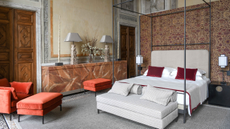 Palazzo Durazzo Suites in Genoa: a palatial gem in northern Italy
Palazzo Durazzo Suites in Genoa: a palatial gem in northern ItalyThe Week Recommends Live your Italian dream in this astonishing and recently restored palace in the heart of the city
By Nick Hendry Published
-
 6 fabulous hotels to visit in April
6 fabulous hotels to visit in AprilThe Week Recommends Stay at a zoo in Sydney, or meet vortex hunters in Sedona
By Catherine Garcia, The Week US Published
-
 The cultural fight over Michelangelo's David
The cultural fight over Michelangelo's DavidUnder the Radar Some in Italy are trying to stop what they consider 'debasing' use of the sculpture
By Justin Klawans, The Week US Published
-
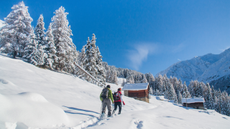 Bormio: 'a great Alpine getaway'
Bormio: 'a great Alpine getaway'The Week Recommends From snowy slopes and hot-spring spas, to high-end food and wine, this Italian town has something to offer everyone
By Asya Likhtman Published
-
 Puglia's rich medieval heritage
Puglia's rich medieval heritageThe Week Recommends Holy Roman Emperor Frederick II built 'the most flawless of all medieval European castles' in the southern Italian region
By The Week UK Published
-
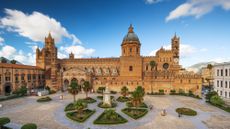 Palermo's swagger and scruffy charm
Palermo's swagger and scruffy charmThe Week Recommends From its opera house to its art galleries, the Sicilian city is 'adorable and underrated'
By The Week UK Published